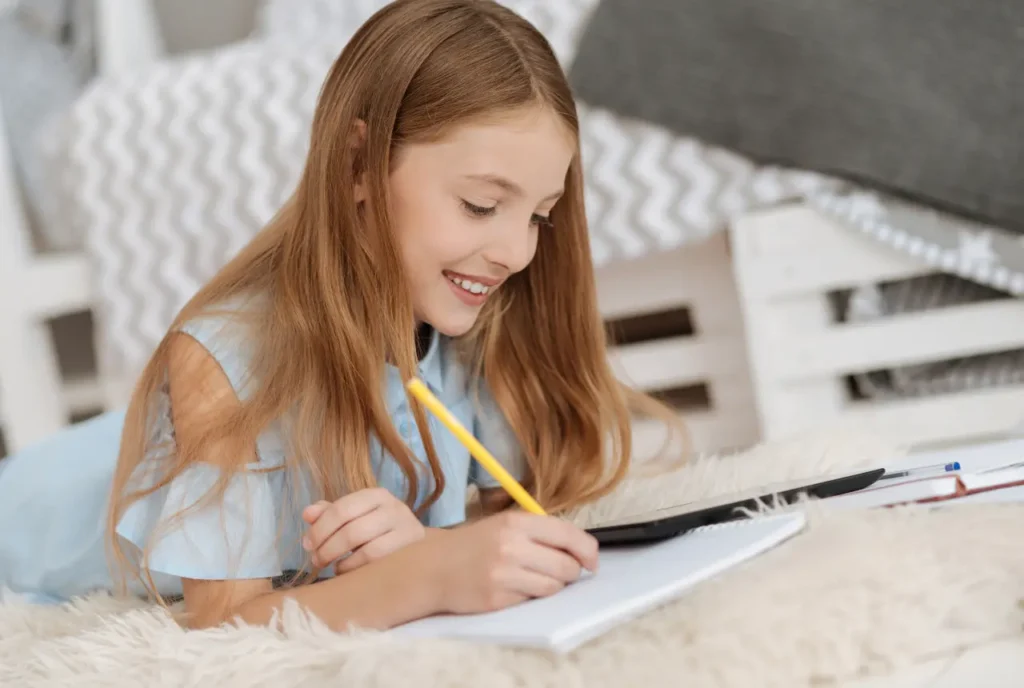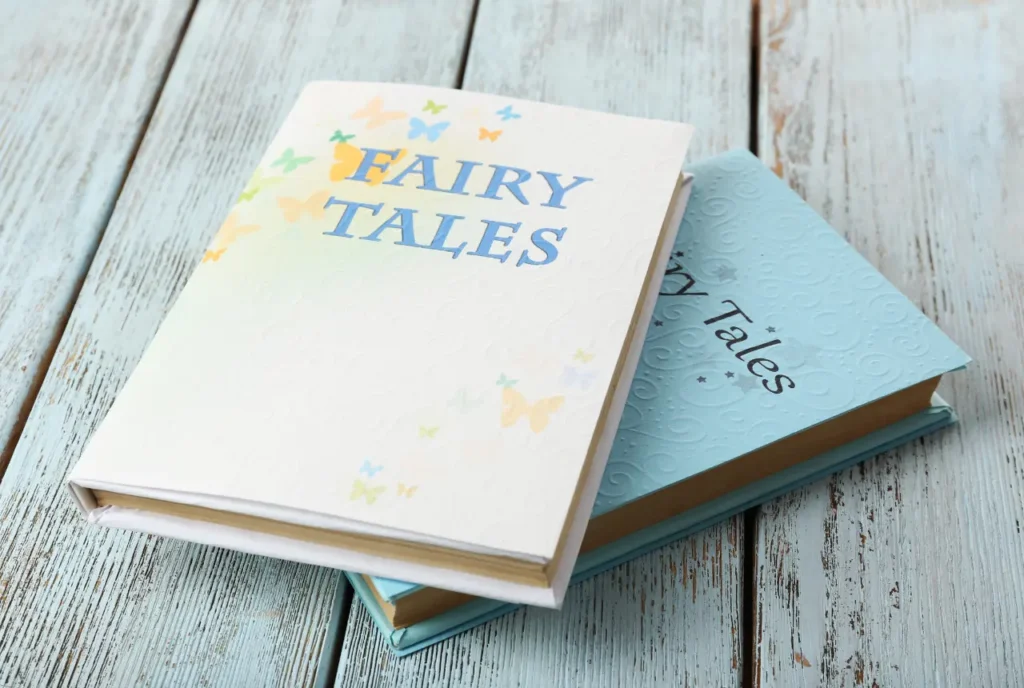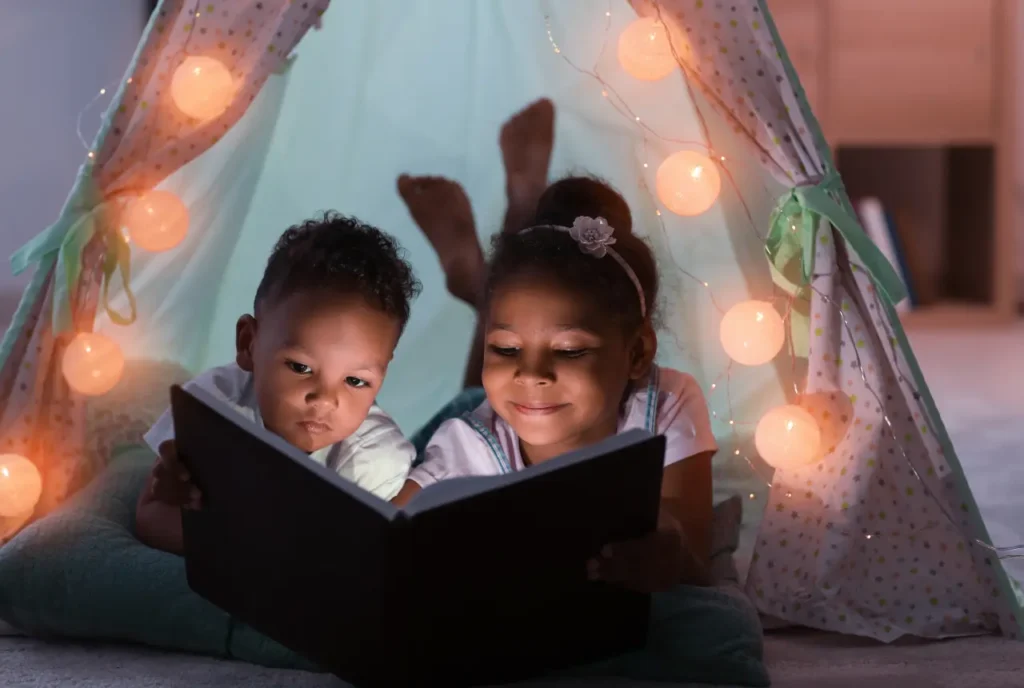![]()
Writing unpacks a whole different new world of imagination for students or kids to explore. Therefore it is considered that writing exercises for kids is one of the best ways for the students to be more creative and expressive.
In today’s world, being able to express ideas through writing is super important. For kids, having good writing skills helps them communicate better and think more critically. However getting kids excited about writing can be tough for parents and teachers. So, how can we make writing fun and helpful? This blog post has some great ideas!
We’ll share a bunch of different writing exercises that are not only enjoyable but also really good for kids. Whether they’re writing imaginative stories, describing things in detail, or trying their hand at poetry, these activities are meant to spark creativity and make writing more fun for young learners.
Top 10 Writing Exercises for Kids to Spark Imagination
1. Story Starters

Story starters are one of the best writing exercises for kids that can spark a child’s imagination and get their creative juices flowing. They’re like little prompts or opening sentences that help kickstart the storytelling process. With story starters, kids don’t have to face the scary blank page – instead, they have a jumping-off point into the world of imaginative writing.
What’s great about story starters is that they can work for all sorts of stories – fantasy, mystery, adventure, you name it.
But story starters aren’t just about getting inspired. They’re also super helpful when kids feel stuck and don’t know what to write. With a clear starting point, they can dive right in and start writing with confidence. Plus, story starters encourage kids to try out new ideas and explore different themes. By using starters, kids can stretch their imagination and get better at writing in all kinds of genres. it gives them a free set of mind to write, they can write whatever they want without any rules an
So, story starters aren’t just fun – they’re invaluable tools for helping kids unleash their creativity, break through writer’s block, and become confident storytellers.
2. Sensory Writing Prompts
Sensory writing prompts are all about using the five senses—sight, smell, touch, taste, and sound—to create detailed and immersive descriptions that pull the reader right into the story. By tapping into multiple senses, sensory writing makes scenes, characters, and objects feel real like you’re right there experiencing everything yourself. In simple terms, by focusing on the sensory details of a scene, writers can create more vivid and engaging descriptions, which can help bring their stories to life for readers and improve writing skills for kids.
For example, a prompt might ask you to describe the salty smell of the ocean breeze on a beach, the satisfying crunch of leaves in the fall, or the mouth-watering scent of freshly baked cookies coming from the kitchen.
When kids use their senses in writing, it helps them become better at describing things and expands their vocabulary as they search for just the right words to bring their scenes to life. With sensory writing prompts, children can create vibrant worlds with their words, boosting their creativity and sharpening their descriptive skills along the way.
3. Character Interviews

Character interviews are a fun way for kids to really get to know the characters they’re writing about. In this exercise, kids get to play both the interviewer and the character, coming up with questions to learn more about the character’s backstory, motivations, and goals.
This type of interview is typically used in creative writing, screenwriting, and journalism to gain a better understanding of the characters’ thoughts, motivations, and personalities. In character interviews, the interviewer poses questions to the subject to uncover their likes, dislikes, fears, and desires
By doing these interviews, kids not only make their characters more interesting and complex, but they also get to practice creative thinking as they explore the ins and outs of their character’s minds. It’s a great way to learn more about storytelling and how to create compelling characters.
4. Comic Strip Creation
Creating comic strips is a super fun activity that packs a ton of benefits for young writers. When kids make comics, they’re not just telling a story – they’re also practicing writing dialogue, developing characters, organizing their narrative, and building vocabulary for young writers.
A comic strip usually has panels that show different parts of the story in order. Kids can come up with all kinds of storylines, from wild adventures to everyday moments, and create characters with their own personalities and motivations.
There are lots of online tools like Pixton or Canva that make it easy for kids to create their own comic strips. These tools give them everything they need to bring their stories to life with pictures and words.
5. Alternative Endings

Encourage kids to get creative by imagining new endings for stories they know well, like fairy tales or classic tales. This exercise, called alternative endings, gets kids to enhance creative thinking for kids in new ways as they explore different ways a story could finish.
By questioning the usual endings, kids get into important discussions about how plots unfold, why characters make certain choices, and what happens as a result. Whether they’re giving an old story a modern twist or coming up with a surprising conclusion, writing alternative endings lets kids broaden their imagination muscles and learn more about how stories work.
6. Descriptive Paragraph Challenge
Paragraph writing is another fun writing game for children, where they are asked to write descriptive paragraphs to make their writing skills fluent. Whether they’re describing an object, a place, or a person, the goal is to use lots of sensory details and rich language to paint a vivid picture.
By using words that appeal to the senses, like describing how something looks, sounds, smells, feels, or tastes, kids can make their writing come alive. This not only improves their descriptive writing skills but also helps them get better at organizing their sentences in a clear and precise way.
Teaching kids to write paragraphs helps them learn how to use language to create worlds that readers can really get lost in. It’s all about capturing the essence of their subjects in a way that makes people feel like they’re right there experiencing it themselves.
7. Build-a-Story

Build-a-Story is another fun writing game for children. Here’s how it works: everyone takes turns adding a sentence or a paragraph to create a story together. It’s a super cool way to work as a team and get creative because each person’s ideas build on the ones before.
Whether you’re playing with your family, classmates, or friends, “Build-a-Story” brings everyone together and gets their imaginations going. It’s a super fun storytelling activity for children that helps build up creative ideas, all while learning to work together and share your thoughts.
8. Poetry Power
The Power of Poetry is another writing exercise for kids that boosts their writing skills. You will find various types of poems, like acrostic, haiku, and limerick that foster children’s minds and brains to work in a very creative way.
Acrostic poems are like word puzzles – you spell out a word vertically and each line starts with the letter from the word. For example, if we were writing about “Spring,” our poem might start with “Sun shines brightly, Birds sing joyfully…” Each line starts with the letter from “Spring.”
Haiku is a special type of poem from Japan. It’s super short – just three lines – and each line has a specific number of syllables: 5-7-5. Haikus are perfect for capturing little moments in nature, like the sound of raindrops or a butterfly landing on a flower.
And then there’s limericks! They’re funny little poems with five lines and a catchy rhyming pattern. Limericks are great for making people laugh with silly stories or jokes. This is one of the best ways to learn how to express one’s feelings through words.
9. Dialogue Duels

Creativity Kicks up a notch with a super fun activity called Dialogue Duels that enhances the writing skills of kids. It’s like a friendly battle where we get to practice writing awesome dialogue that results in building vocabulary for young writers.
Here’s how it works: We’ll take turns writing dialogue lines based on a cool scenario or prompt. It could be anything – like two friends planning a surprise party, or a superhero and a villain having a showdown.
As kids write the dialogue lines, they will really get into their characters’ heads. Furthermore, they’ll think about what they would say based on their personalities and motivations. The goal is to make their conversations sound natural and authentic, just like real people talking.
Dialogue Duels sharpens our dialogue-writing skills and gets better at bringing our characters to life. Plus, learn more about how to make their stories richer and more exciting with dynamic conversations.
10. Newspaper Articles for Kids
Newspaper writing is also another best fun writing exercises for kids to learn about the world around them.
When kids write newspaper articles, kids get to pick topics that interest them or talk about stuff that’s happening right now. Kids can do some research to find all the important facts, and then put them together in a way that’s easy for people to understand. As kids write, they’ll get better at organizing their ideas.
Writing newspaper articles is a great way to practice one’s writing skills and learn how to share important information in a way that’s clear and engaging. Plus, they’ll get to learn a lot about what’s happening in the world and how to think critically about it.
Conclusion
Incorporating these writing exercises for kids into a child’s routine has tons of benefits. Things like story starters, sensory writing prompts, and character interviews help kids get creative, think critically, and express themselves better. Collaborative activities like Build-a-Story also teach teamwork and communication, while exploring poetry forms boosts linguistic creativity and emotional expression.
Other tasks like writing newspaper articles or coming up with alternative story endings build research skills, factual writing, and understanding different viewpoints.
As parents and educators, it’s important to know that every child is different. By trying out different writing exercises and tailoring them to each child’s interests, they can find joy in writing in a way that’s just right for them.
Writing isn’t just a basic skill – it’s a way for kids to express themselves, think critically, and keep learning throughout their lives. By encouraging their passion for writing, we help them share their thoughts, stories, and ideas confidently and creatively. So let’s use these writing exercises for kids to inspire and empower the next generation of writers, thinkers, and communicators!










